I love how acupuncture is FANTASTIC when it comes to Dysmenorrhea Relief. Or how Traditional Chinese Medicine can help with Menstrual Cramps. Because I know first hand what it feels like to be stuck in bed with so much pain I vomited most of the time. When I was a teenager, I was affected by dysmenorrhea and every month, I wasn’t able to attend school for 2 to 3 days!
Eventually my mom took me to an acupuncturist who helped me tremendously. During my menstrual years (I’m done with this cycle of my life now!), I did not experience dysmenorrhea any longer! And that is due to eating a healthy diet, managing stress and getting regular acupuncture.
In today’s video, I share the western definition and their treatment options, TCM view including different patterns of diagnosis, symptoms, acupuncture points, ear acupuncture, herbal formulas, food recommendation and other treatment options.
But always remember: the treatment for dysmenorrhea should always address the TCM pattern of diagnosis and the acupuncture treatment should follow it.
Keep rocking using TCM,
Clara
TCM Geek
PS: If you want more, check out my page with all my acupuncture treatment protocols from pain to high blood pressure! And if you haven’t invested in my AcuPoints Made Easy Book (PDF or Hard Copy) yet, or my Chinese Medicine TREATMENTS Made Easy, get your copy here! 🙏
Acupuncture for Dysmenorrhea (Menstrual Cramps)
Dysmenorrhea Definition
Dysmenorrhea, more commonly known as menstrual cramps, is a common and often debilitating condition that affects many women during their menstrual cycle. These cramps can range from mild to severe and can last for several days.
There are two main types of dysmenorrhea: primary and secondary.
- Primary dysmenorrhea is the most common type and is caused by the contractions of the uterus during menstruation. It typically begins one to two years after a woman starts her period and tends to get better with age.
- Secondary dysmenorrhea, on the other hand, is caused by an underlying condition such as endometriosis, uterine fibroids, or infection.
Symptoms of dysmenorrhea may include lower abdominal pain, back pain, leg pain, nausea, vomiting, diarrhea, and headache. These symptoms can range from mild to severe and can significantly impact a woman’s daily activities and quality of life.
Western Treatments for dysmenorrhea can vary depending on the severity of the cramps and the underlying cause. Over-the-counter pain medication such as ibuprofen can also be helpful in reducing pain. For more severe cases of dysmenorrhea, a healthcare provider may recommend hormonal contraceptives to regulate the menstrual cycle and reduce cramping. In some cases, surgery may be necessary to treat underlying conditions that are causing the cramps.
Chinese Medicine view on Dysmenorrhea
Definition: lower abdominal pain and/or sacral area menstrual pain occurring before, during or after the periods. The pain may be so severe that one cannot work or function; there may be vomiting too.
TCM Causes: emotional stress, cold & damp conditions, overwork, chronic illness, or sexual intercourse too often.
The 5 Best Acupuncture Points for Dysmenorrhea
- SP 8 is the Xi-Cleft point of the Spleen meridian making it the BEST acupuncture for menstrual cramps.
- LI 4 is the BEST acupuncture for pain.
- SP 6 is the acupuncture point that crosses 3 meridians (Liver, Kidney and Spleen), which helps move Qi & Blood, balance hormones and regulate the female reproductive system.
- KD 5 is the Xi-Cleft point of the Kidney and is used for menstrual cramps (especially for long standing dysmenorrhea).
- LV 3 is great to relieve stress and move Qi, which make it a fantastic point to relax the body and soothe the pain.
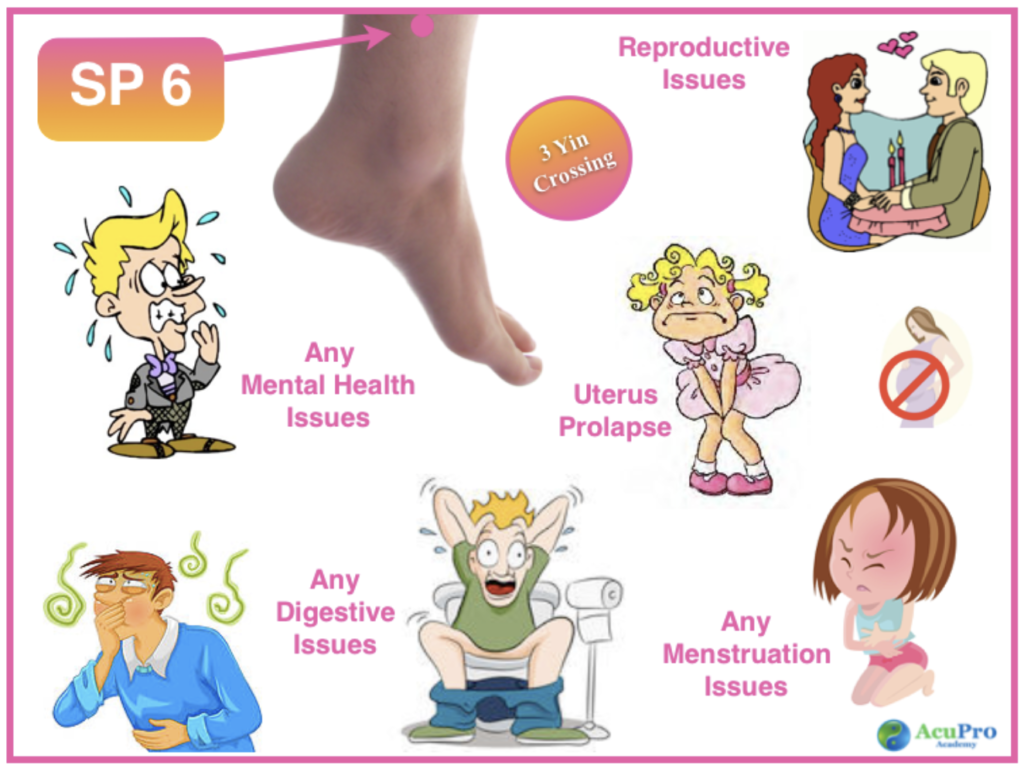
Research on Acupuncture for Dysmenorrhea
- A review of several studies found that acupuncture was effective in reducing the intensity and duration of dysmenorrhea, as well as improving overall quality of life.
- Another review of randomized controlled trials found that acupuncture was effective in reducing the severity of dysmenorrhea, and that the benefits of acupuncture persisted for up to three months after treatment.
- Additionally, a meta-analysis of randomized controlled trials found that acupuncture was significantly more effective than placebo in relieving dysmenorrhea, and that it was as effective as non-steroidal anti-inflammatory drugs (NSAIDs) in reducing pain.
Treatment options for menstrual cramps (dysmenorrhea)
- Ear Acupuncture: ear (Endocrine, Sympathetic, LV, SP, KD).
- Seven Star on the sacrum area daily for a week prior to menses (if there is stagnation only).
- Heat therapy: applying heat to the lower abdomen or back can help relax the muscles and reduce cramping. You can use a heating pad, hot water bottle, or castor oil packs. And add Moxa on the acupuncture points for cold patterns affected by blood stasis or cold.
- Exercise: regular exercise can help reduce the severity of dysmenorrhea. Gentle activities such as walking, yoga, and Tai Chi can be effective in relieving cramping.
- Relaxation techniques: stress can exacerbate dysmenorrhea. It is important to educate our patients in finding ways to relax and manage stress. Techniques such as deep breathing, and meditation can be helpful in reducing cramping.
- Herbal remedies: single Chinese herbal teas such as ginger, turmeric, and cinnamon, have anti-inflammatory properties and help reduce cramping.
- Diet and lifestyle changes: making changes to the diet and lifestyle can also help reduce the severity of dysmenorrhea. The patient needs to be eating a healthy, balanced diet and avoiding foods that can trigger cramps such as caffeine, alcohol, and processed foods, can be beneficial. Staying hydrated and getting enough rest can also help manage cramping.

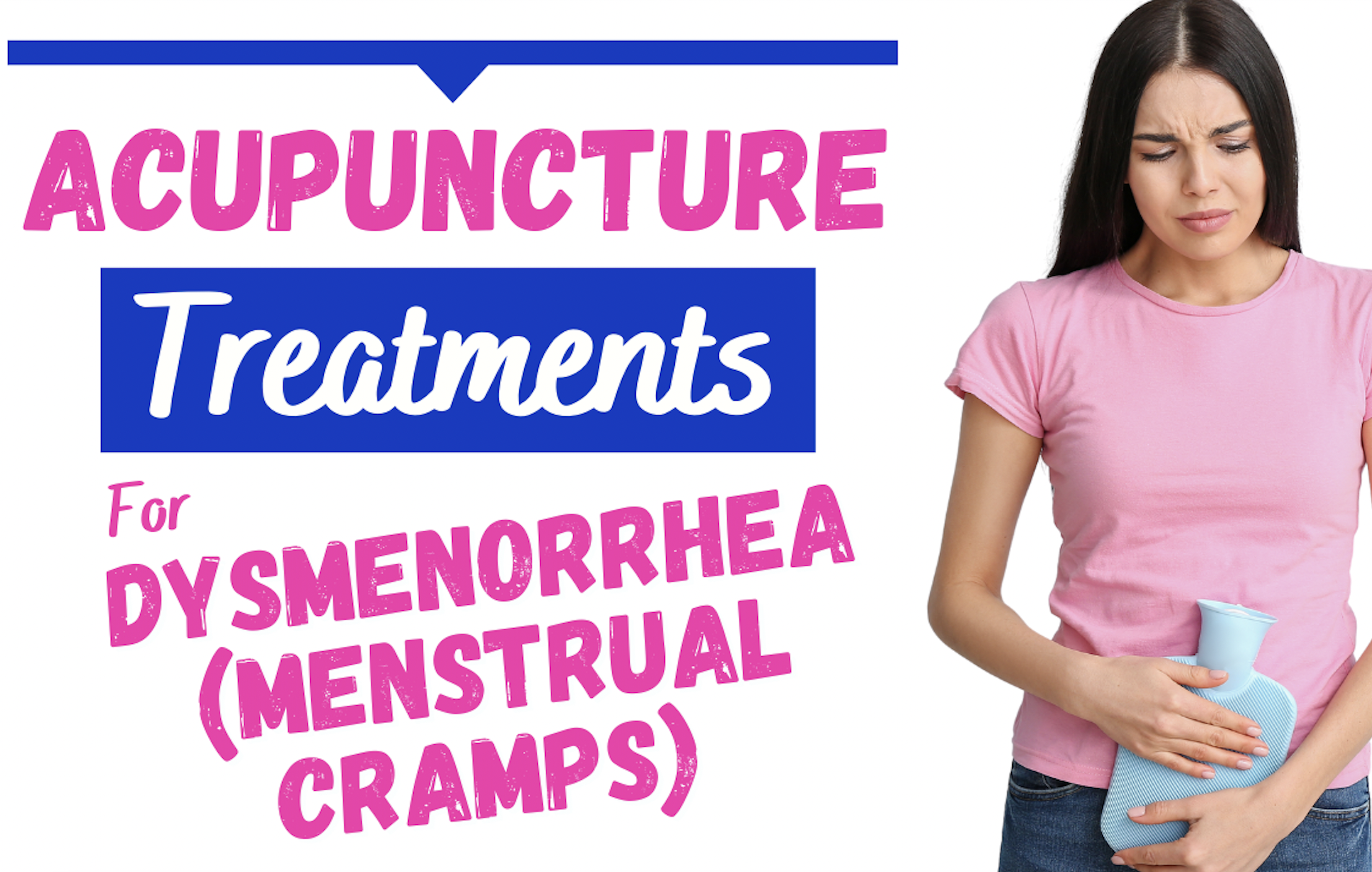
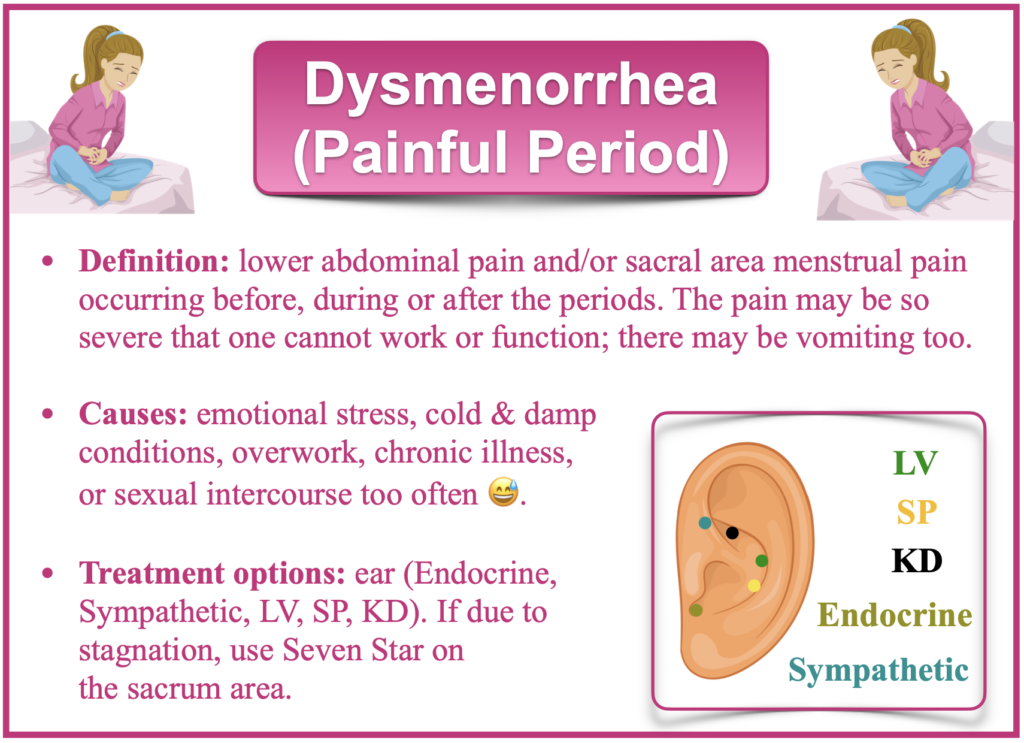
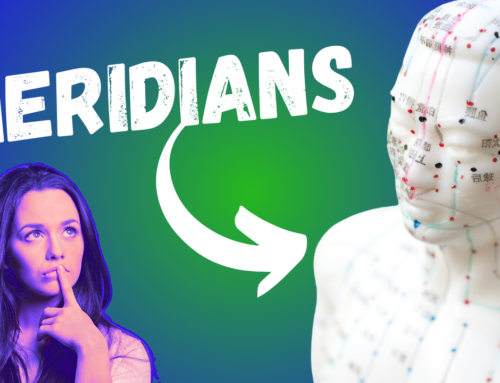



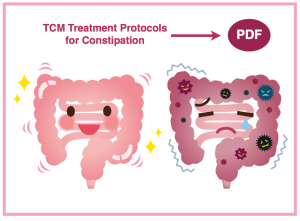
Ďakujem CLARA, si najúžasnejší človek akého poznám. Ďakujem za všetko CLARA❤️🥰👍
Sorry I can only read English or French 🙂
hey Clara, I love your channel. I am a second-quarter DAOM student. this information has been so helpful! I watched the video about painful cramps and saw the chart with the breakdown of conditions and symptoms and diagnosis. I can not find this in my pdf Acupoints made easy. Is this in a different pdf?
Hey Mutharoot! Congratulations on your studies, that’s awesome ✨
Clara is referencing charts in her third book/pdf ‘Chinese Medicine Treatments Made Easy‘ which focuses on protocol treatments and covers over 160 syndromes and much more. Check it out and let us know if you have any more questions 💜